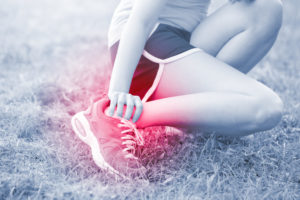
Are you prepared for the start of the new sports season
As we stagger towards the end of summer’s oppressive heat, our minds start to turn towards the cool relief of the upcoming winter months. With the change in seasons, comes a change in sporting codes: cricket bats are packed away, rugby & soccer boots are dusted off, netball bibs are removed from the mothballs and – well – you get the idea.
But after a summer of swimming, vacationing & school holidays our bodies are not necessarily prepared for the onslaught of preseason training and the radical change in activity levels. This makes us all (young and old) vulnerable to injury and impairment.
Rather than risk being sidelined with pain that prevents the enjoyment of sporting participation, why not start now and put down a solid fitness base to address those niggling injuries from last year? Get professional advice that will put you in the best position to enjoy and succeed in this years’ sporting endeavors? Do it now!
Don’t wait until it’s too late.

Don’t get injured this sports season
This blog post will focus on an area of sports medicine that we at Footsmart see a lot of (especially at this time of year) – lower limb overuse injuries. What are overuse injuries, are there signs? How can they be prevented and managed?
At it’s most basic; overuse injuries develop as a result of an imbalance between training load to the tissues (muscles, tendons, bones) and recovery time. When recovery time is insufficient, the cellular damage to the body that naturally occurs during training is allowed to accumulate unchecked and can eventually result in activity-related musculoskeletal pain, damage and impaired performance.
Different age groups are susceptible to different types of overuse injuries. Adults are generally more prone to tendinous injury due to the soft tissues becoming more brittle over time. Children, on the other hand, are more likely to damage to growth plates (cartilage), which are still highly active and often not ‘knitted’ together yet.
The classic feature of an overuse injury is a slow and gradual (insidious) onset of pain associated with repetitive activities. Pain may initially be sporadic and only present at the start of the activity and gradually ‘warm-up’ only to return later after rest. However, left untreated this pain can become more entrenched and persist throughout activities of everyday life. Most overuse injuries do not have one isolated cause; they are multifactorial.
So how can overuse injuries be prevented?
Science has been kind enough to supply us with a list of risk factors that are associated with overuse injuries. Positive outcomes are achieved by first identifying – and then addressing – the risk factors within a patient; here’s a few of them…
Too much too soon
Training errors are the most common cause of overuse injuries and it is generally accepted that an increase in training volume of more than 10% per week is a significant risk factor for developing an overuse injury. Monitor your ‘miles’, start early and progress slowly.
Previous injury
If you have had an injury before, you are more likely to see that particular injury again. Have yourself assessed by an appropriate health professional & start some (prompt!) targeted therapy. Seeking help early shortens the road to recovery.
Pre-season conditioning
A solid foundation of focused pre-season training is vital to staying injury-free. This stage of training should emphasise strength, balance, flexibility and neuromuscular control. Undertake some preventative measures so you don’t have to face rehabilitation.
Equipment
All sports equipment should be in good condition and also be the right size for the participant. This is none truer than for footwear. Kids feet grow like weeds & many adults (one-third of men and up to half of the women according to one study!) wear shoes that are either the wrong size and/or the wrong shape for their feet. Not all shoes are created equal and it can be confusing when confronted by a wall of foot technology in a shoe store. Your lower-limb health professional can prescribe, recommend and ensure a proper fit for your shoes – we take into consideration your foot size, foot shape, current fitness, injury history, activity levels, activity type, training surfaces and so on…
Kids

Kids can succeed with the right equipment and preparation for the new sports season
Children have energy abound and are often involved in high levels of activity. It has been shown that concentrating on one or two sports too early in life can increase the risk of injury. Too much of the same type of activity can overload growing bodies & lead to a breakdown. Try to vary your child’s activities as much as possible and don’t specialise until the teenage years. If your child does compete in only one sport at a high level, monitor their rest days & pounce on any niggling or new injuries early.
The take home messages are as follows:
Prepare & plan your sporting year. Start training early with a focus on strength & balance – specific sporting skills can be developed closer to the start of the season. Vary your activities as much as possible and REST – even if you don’t feel like it. Make sure your equipment is in good condition and it fits correctly. Lastly, don’t wait to seek professional help – your medical professional is an expert in the diagnosis, management & prevention of injuries – get help early so that you can participate, enjoy, and excel in your chosen sporting endeavors.
Here at Footsmart Podiatry, we can help, we offer a pre-season check-up for Kids and Adults to assess the fit and condition of your footwear, offer advice and assistance with preventative taping and identify it some additional foot support could help improve your enjoyment and results in this season.
To book your appointment today